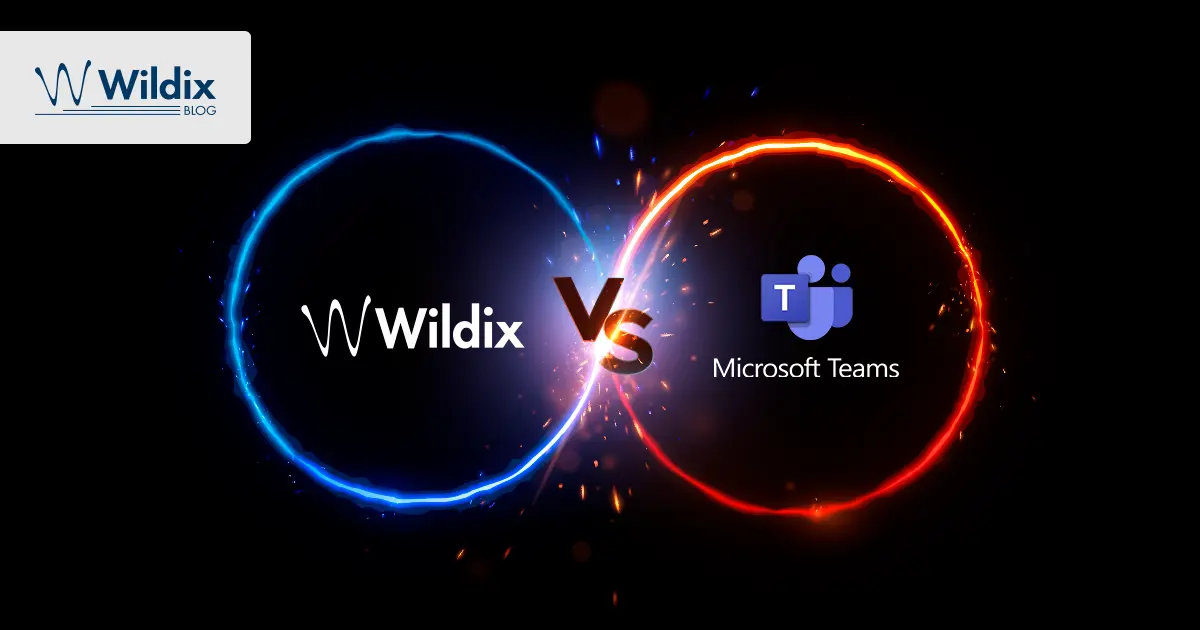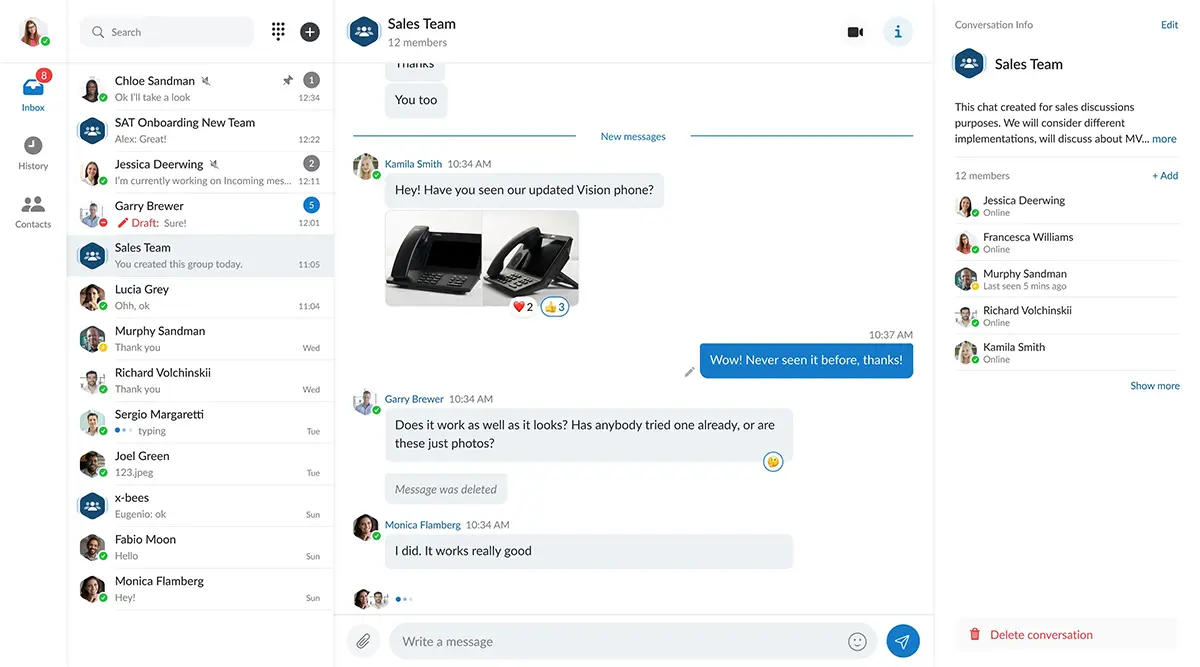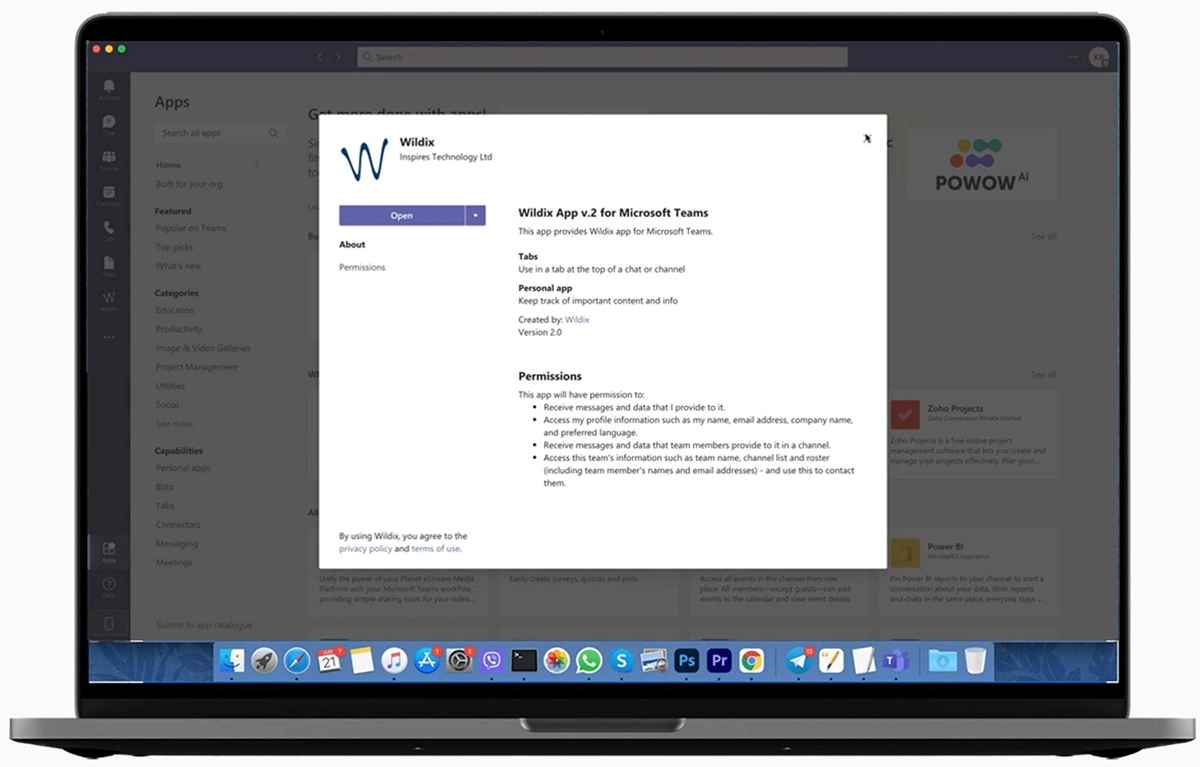
To most business owners considering a business communications system, more likely than not a leading candidate is Microsoft Teams.
Microsoft is a powerhouse, and businesses that use a Microsoft suite of tools may even be using Teams already. Unsurprisingly, Teams is designed to integrate seamlessly with other Microsoft products, especially the Office 365 lineup. As a result, plenty of organizations see it as a natural fit for their communications needs — if Teams hasn’t been pre-loaded into their system already.
But as Gartner states, Teams is not the most complete communications solution on the market. Since it’s primarily a team messaging platform, it tends to fall short in external calling in particular.
So just how effective is Microsoft Teams for business communications? In this edition of Wildix vs., we’ll go over how well this platform measures up against Wildix’s own solutions — along with how much better Teams gets when it’s used alongside Wildix.
Unified Communications
Comparing Wildix and Teams purely as UC&C platforms, there aren’t many differences overall.
In terms of feature sets, the two line up very neatly. Both have video calls, voice calls, integrated chat, file transfer and webinar capabilities, and both claim rigorous levels of built-in security.
Wildix and Teams also both run in the browser, but are each available as a standalone app. However, Teams cannot perform video calls over mobile browsers, so calling on the go requires downloading the app. Wildix, meanwhile, can join video calls both via mobile browser and the x-bees mobile app.
Reviewers and users do sometimes note confusion on navigating the Microsoft Teams interface, however, but your mileage may vary depending on your preferred program layout.
So as far as internal communications go, choosing between the platforms is primarily a matter of interface preference and integration needs.
However, the two quickly become more distinct as we look at how they handle external communications.
Telephony
However, Teams has a gaping hole when it comes to external communications. A standard Teams license allows users to message and call other members of their organization, but does not allow them to contact external parties. Doing that requires organizations to purchase both the Teams Phone and Teams Calling Package add-ons, which must be purchased and installed separately.
This integration lets Teams make and receive communications with external parties, but those features come with limitations. The biggest one is length of use: currently, the most expensive Microsoft Teams Phone calling plan limits users to 1,200 minutes of outgoing domestic calls or 600 minutes of outgoing international calls, whichever is reached first.
Microsoft Teams Phone locks many of its capabilities behind Communications Credits, an in-app currency to pay for additional call minutes and case-by-case features. To use a toll-free number for your organization, you’ll need to set up a payment plan for Communications Credits. You’ll also need Credits to pay for features like call queuing, auto attendant and audio conferencing to be used for that toll-free number.
There are also many features Microsoft Teams Phone lacks outright. Notably, the solution does not feature call recording, call intrusion, custom call routing or much in the way of CRM integrations. It also has no call analytics capability, making it hard to recommend for contact centers.
Wildix, meanwhile, has all the telephony features from Microsoft Teams Phone while covering the capabilities Teams misses. The Wildix lineup also provides 3,000 monthly minutes for international calls via CLASSOUND.
| Wildix | Teams | |
| Domestic calls | 3,000 minutes | 1,200 minutes |
| International calls | 3,000 minutes | 600 minutes |
| 24/7 telephony support | ||
| AI speech recognition | ||
| Call group and queue management | ||
| Call recording | ||
| Call intrusion: barge (conference intrusion), listen (silent intrusion), whisper (partial intrusion) | ||
| Call analytics | ||
| Music on hold | ||
| Call forwarding and transfer | ||
| Group call pickup and forward to group | ||
| Call park and retrieve | ||
| Caller ID | ||
| Device switching | ||
| Presence-based call routing | ||
| Distinctive ringtones | ||
| Shared Line Appearance | ||
| Call blocking | ||
| Paging / Intercom | ||
| Graphical IVR | ||
| Direct inward dialing (DID) |
Integrating with teams4Wildix
But all this isn’t to say the choice has to be Wildix or Teams.
Although Microsoft Teams needs add-ons to work as a telephony solution, for many organizations it’s still a winning choice in a communications system. The fact that the platform is built to integrate with Office 365 undeniably makes Teams a natural fit for Microsoft users, and with how it frequently comes preloaded in Windows environments, staff may be so used to using it they’ll be hard-pressed to learn something else.
In cases like that, there’s no need for a full switch from Teams to Wildix — just an integration of the two.
With the free teams4Wildix plugin, Microsoft Teams syncs with Wildix so that the two can run simultaneously alongside one another. Without even switching applications, staff can use all the voice components from Wildix as a dedicated tab right in their Teams window.
This combination gives Teams users the best of both worlds: Not only can they continue using their preferred platform for Microsoft ecosystems, they have access to enterprise-grade voice solutions for all their external communications.
The only difference will be that Wildix handles your phone calls, giving you 3,000 minutes of international calls via CLASSOUND. In terms of cost-efficiency, this combined option provides far more capability overall.
In addition, you’ll get full access to Wildix’s suite of advanced telephony features. Capabilities like call queuing and advanced recording (unavailable on Teams) can now be performed directly in the Teams app through the teams4Wildix tab. The integration adds key capabilities to your Teams setup without disrupting the look and feel colleagues have already gotten used to, minimizing disruption and reducing the need for training. It becomes a much more complete digital telephony platform, blazing past the limited offerings from Teams Phone and Teams Calling Package.
Conclusions
On their own, either Wildix or Microsoft Teams will easily cover the internal communication needs of almost any SMB. For external communications, however, it’s wisest to use Wildix.
But choosing Wildix for your telephony service doesn’t mean you have to discard Teams. Thanks to the teams4Wildix integration, you can still use Teams as your primary communications platform. So to set up a truly efficient digital telephony system, Wildix will easily be the best choice, either on its own or in tandem with Teams.
For more insight into digital communications, subscribe to receive our magazine for free!

